ABSTRACT
With the amount of problems faced today, it is a well-known fact by now that the world needs more designers. But even the existing designers do not know how to go about addressing these problems; as the notion of Social Design is a challenging one. With this growing need and interest and in the domains, there is a responsibility that designers have towards the society. This paper proposes a framework that could be used to teach Social Design as a part of the offerings of a Design course in Product Design or Service Design or independently. The example taken to illustrate the framework is a work in progress.
Author Keywords
Social Design; Wicked Problems; System Design; Methodology; Frameworks; Service Design; Design Education
Kshitiz Anand, Dean & Director
LÉcole de design Nantes Atlantique (India campus)
k.anand@lecolededesign.com
Jean Haag, Masters Student, Transcultural Design
LÉcole de design Nantes Atlantique
(India Campus)
jb.haag@lecolededesign.com
INTRODUCTION
In the connected world we live today, designers face new challenges to overcome. This was voiced first by V Papanek in his iconic book Design for the Real world almost 30 years ago. In his words, Design has become the most powerful tool with which man shapes his tools and environments (and, by extension, society and himself) [15], Whiteley in his book ‘Design for Society’ calls for design to come out of its consumerist values, consumer led design approach, and the notion of design as a lifestyle accessory [24].
Of late there is huge emphasis from government bodies and various organizations to invest energies and design expertise in the areas that benefit the society at large. This was resonated by numerous design thinkers and companies from IDEO in the form of their Open IDEO platforms [14] and Human Centered Design toolkit [9] to Frog Design’s work in Africa to use design to improve healthcare [8]. It is aimed towards development of society and provides innovative solutions that could attempt to help in solving the world’s problems. The need is for design to be more human centered and not as simply technical or merely style-oriented, as it then loses touch with what is truly needed by people.
India with its diverse economy and cultural map, a huge population living below poverty, and home to a lot of problems provides an immense opportunity to work in the fields of Social Design. Realizing that innovation is the engine for the growth of prosperity and national competitiveness in the 21st century, the President of India has declared the present decade as the ‘Decade of Innovation’. Moreover, National Innovation Council (NIC), set up by the Prime Minister to create Indian model of innovation, is preparing to launch its fund with an initial corpus of Rs 500 crore and that will lend to companies focusing on delivering goods and services to the poorest people in the country. It is also looking to facilitate creation of industry innovation clusters (IIC) for job creation and productivity [3].
Designers with an interest in Social Design and a training in Human-Centered Design will be the people who could benefit most from this. In order to get Design and Design Thinking into the masses, the government under the leadership of Mr Sam Pitroda has also published a blueprint of the Open Design School; at various levels with the education system so that larger sections of society can benefit from Design [17] . Not only India, but there is a voice resonating across the world on the need for Design for Social Impact, but not many are aware of how to go about it [11].
The role of designers in today’s society, with their phenomenological [Husserl and Schütz], i.e. individual perspective upon the lifeworld [1] term and epistemological understanding of things and the ability to empathize with the subjects becomes critical. With their training in understanding of this social space from a human perspective they can hugely influence societal changes. This is not only limited to the urban but also at the rural areas. Designers have a larger role to play in many different fields, and are attempting to solve the many wicked problems faced today, [Kolko] [11] The need of the hour is for designers to get engaged at different levels in shaping of the processes and products that are being created for the social spaces.
Working in the Social Design space is slightly different than working in the conventional product design space, where there exists a linear relation between a problem and a solution. Defining the exact right problem to address is primary to finding a sustainable solution, and often this ‘identifying the right problem’ is the biggest challenge for designers. Next, even if an ideal solution is figured out the practical realities are filled with ‘Wicked problems’ [Rittel, Webber] [19] and there is a constant struggle to find the right implementable solutions to the social problems.
In our paper we propose a framework for Designers interested in the field of Social Design to adapt. It proposes to embrace complexity, and adopt a divergent-convergent-harmonization approach to addressing the needs of the social space. We look into the notion of enabling designers to view from the different stakeholder view points toggle between thinking from a systems design to a product to design and then back to the system design.
We build upon this framework, by seeing its application in designing a system comprised of products and service for a child education initiative in rural Bihar, working towards improving the quality of education.
WHAT IS SOCIAL DESIGN
In order to build upon a framework for Social Design, it is important for us to understand the notion of Social Design or Design for Social Impact first. We are looking at the notion of Social Design, which itself has different definitions and meanings, from Alaistir Fuad –Luke’s book ‘Design Activism’. We understand and recognize these aspects of Social Design as a basis for this paper. He mentions, “the foremost intent of social design is the satisfaction of human needs. The broad objective of social design is to improve ‘social quality’. It is about designing new functionings to elevate individual and community capability and propose solutions that genuinely empower and extend the capability of the user” [7].
PROJECT BACKGROUND
Our project Pick Me, Click Me, Educate Me!, works with the local government schools in the state of Bihar, and aim to improve the quality of education [16]. This comes as a need identified through evaluation of students (and also released in the ASER reports 2011, 2012) [18], which evaluates students from primary, and middle schools, whose learning levels are relatively lower than what would have been expected. We have adopted an activit- based approach to engage with the different stakeholders and come up with ways in which the quality can be improved. Amongst the other things, the project provides scholarship to high school students (called champions) to take up the work of interacting with primary schools and conduct activities there in lieu of their scholarship. Our Social Space thus defined is the primary school education in rural Bihar.
PRIMARY RESEARCH- IMMERSING IN THE LIFEWORLD TO UNDERSTAND THE CONTEXT
Designers should base their Primary Research by immersing themselves into the lifeworld [Husserl, 1936] [1] of the social space. This is to enable the designer to understand the world one lives in, the everyday and the artifacts that compose this world. It is the onus of the designer to understand this space from three different perspectives i.e. phenomenological, epistemological and the sociological perspective. What perspective takes precedence over the others is dependent on the context of the design.
The phenomenological view [Husserl and Schütz] would see the lifeworld to be the study of the structures of subjective experience and consciousness. It is to understand that we as coherent universe of existing objects, we, each “I-the-man” and all of us together, belong to the world as living with one another in the world; and the world is our world, valid for our consciousness as existing precisely through this ‘living together.’ The key take away here being that for a designer to understand the notion of Social Design, one has to place oneself in a context comprised of the various others and the collective shared experience of individuals and objects. It is therefore not about the individual ego of the designer; rather we, in living together, that we understand the world.
The sociological perspective [Habermas] would want to view the lifeworld from a viewpoint of an objective reality of the society. It takes into account the social and material environmental conditions and their relevance. The view of the lifeworld is more or less the “background” environment of competences, practices, and attitudes representable in terms of one’s cognitive horizon. The focus here thus is not on the consciousness of the individual, but to understand the practical rationality that is being governed by the rules of that system. Habermas, whose social theory is grounded in communication, focuses on the lifeworld as consisting of socially and culturally sedimented linguistic meanings [1]. It is thus the lived realm of informal, culturally-grounded understandings and mutual accommodations. Social coordination and systemic regulation occur by means of shared practices, beliefs, values, superstitions, alternate and parallel governing bodies and structures. The Social Designer thus has to pay attention to the society, the rules of it, and to the drivers of communication here. This contradicts the subjective reality as proposed by the phenomenological.
The epistemological is a third perspective that touches upon the notion of ‘life conditions’ as a further reference point to understanding the social space. The life conditions include the material and immaterial living circumstances as for example employment situation, availability of material resources, housing conditions, social environment (friends, foes, relatives, etc.) as well as the persons physical condition (fat/thin, tall/small, female/male, healthy/sick, etc.). It is entrusted on top of the lifeworld and the social and material environment conditions. These conditions aim to look at the particular circumstances in the life. The Social Designer thus has to understand the present conditions and as a result design for the present; and not based on a before thought about impression of the social space.
The above mentioned three perspectives provides the designers with insights into the subjects, the various stakeholders, the social and cultural environment, the governance and in the end is able to verify any preconceived notion about the social space in which they want to design.
The challenges awaiting the designer
The above-mentioned things are easier said than done and very challenging for designers. It is a challenge to come out of the elitist image, which design as a field itself poses and engage with something totally different. Doing any form of design research through ethnography research, contextual inquiries, observations etc, within the lifeworld is challenging. The barriers of language, and often a culture shock, experienced during the research, further enhance this challenge. However the Social Designer can be better prepared to do Primary research, which is an essential part of the Social Design practice. As a result of this the designer will be better informed and adept at Designing for Social Impact.
WICKED PROBLEMS
Wicked problems [Rittel & Webber, 1973] [19] are at the heart of the Social Design space [2]. It is a class of social system problems, which are ill-formulated, where the information is confusing, where there are many clients and decision makers with conflicting values, and where the ramifications of the whole system are thoroughly confusing [6]. Messy, circular, and aggressive, these wicked problems are extraordinarily difficult to categorize or define. In his original formulation, Horst Rittel listed ten characteristics of wicked problems, including the most troublesome first characteristic: defining wicked problems is in itself a wicked problem [5] .The inability to get to this core and the impossible nature of being able to differentiate makes things difficult. Multiple starting points and often no clear end mark the characteristics of wicked problems as the solution are intermingled with another problem within the same social space and share a causal relation to each other [Figure 1].
The problem and solution do not share a one-on-one linear relation. The solution often has remnants of the other problems within the social space. Such is the related nature of wicked problems.
Project findings from primary research
In the context of the child education project in Bihar, we traveled to Bihar, and in particular to the schools and villages where we are working towards improving the quality of education. Our aim was to speak to the different stakeholders, and get a deeper understanding of the lifeworld in its reality and get insights into the right problems.
We spent close to a week, speaking to the students of different classes, the class teachers and the principals, the government officials, the social workers, the politicians and the parents of the children. We had prepared our initial understanding of the social space, and identified the broad areas of the problems in the system. As an Indo-French team working on the project, we were the cynosure of the areas wherever we went.
By virtue of being the outsider, we were welcomed (most of the time), and it allowed us to experience culture shock first hand. Our agenda included meeting people, listening to them, field observations, playing and eating with them.
Figure 1: How Wicked Problem usually are
We did this to get the human factor; which is the core aspect of social design, to our project and not just rely on surveys and other research data available. We were able to identify the active participant versus the mere spectator in the designing exercise. The discussions were around expectations, the unfulfilled promises of the government bodies etc. and the current state of education.
We got to know the drivers of education and the motivation behind the children attending school. Interestingly (and sadly) many students come to school only for the food given through the mid-day meal schemes, and to benefit from the various other government schemes [22].
After this we defined the problems and proposed several work axis to get the stakeholders into a participatory approach. The basic idea is to have more face-to-face conversations, randomly start a conversation and share a moment of their lifeworld and life condition together. Knowledge that will eventually inform the design will come.
A need to recruit a local project manager to help manage the project was identified by this research. The responsibility of this person would be to lead activities and conduct oneself as an integral part in the system (as proposed later). This is vital for us as long as we are not based at the location, as would be the case with many Social Designers. The responsibilities of this person would be to conduct activities, collect feedbacks from the users, and maintain a constant supervision of the project.
SECONDARY RESEARCH- WHAT OTHERS ARE DOING
A key aspect of the Social Design Framework we are proposing is the understanding of the work done by others in the same field. We call this secondary research. This could be social entrepreneurs, Non-profit organizations, government initiatives, individuals, grass-root innovators and solutions that work at the bottom of the pyramid. There are different ways in which we propose the Secondary Research be conducted.
Understanding the global context
We do this research phase by exploring as wide as possible, aiming to gather all information relating to the topic the Social Designer is trying to work with. Without restricting in any way, one simply collect facts, statistics, laws, projects, private or government-led programs, issues currently faced, NGOs working on it and so on. While doing this, the original Social Space should be kept in mind. Activities like brainstorming enable the designers to not discard any thought. Each identified area / problem / topic is written down put up on a wall and the cards (or post its) are sorted out to identify the main areas of improvement. An exercise in Affinity Diagramming (Brassard, 1989) [10] or Card Sorting [20] [Figure 2] helps in clearer classification of the collected information.
Figure 2: Affinity Diagram exercise
It is often at this point that the notion of Wicked Problems as discussed earlier, comes into full force. The identified problem areas seem interconnected and often share a causal relation to each other.
Designers interested in the notion of Social Design need to be aware of the Analysis – Paralysis [Ed Yourdon] [25]. This common known term describes the state of an analysis process that does not make any – or just a small – progress because of the claim to construct a perfect model of the system. The deeper and further we go, the more we face the wideness and complexity of this topic. One should know when to stop looking for further information on the different parts of the Social Space.
At this point Designers should understand one very key aspect of the Social Design space. One should understand the need to concentrate the work on something specific amongst the identified problem spaces, for it is impossible to improve the whole Social Space in one project.
Exemplar Research
Exemplar Research calls for looking at similar work being done in the field. It could be a direct relation to the work within the Social Space or an indirect relation. Conducting interviews with an open mind, with professionals and organizations of this area helps to seek inspirations and exchange thoughts and also validate the findings from the above exercise in finding the problem spaces. Meeting with professionals can occur in various ways. Going to an NGO office to interact with its employees is a great thing to do, but sometimes difficult. Fortunately, there are new ways of acquiring knowledge, and we used them as much as possible. Some of them are recorded videos of work and other written project reports. It is also used to know about real stories from experience, which later serves as huge motivation. Their inputs also help in making decisions when stuck with Wicked Problems.
Secondary research allows designers to come out of their fool’s paradise and as a result adopt a more pragmatic approach to their design creation. It provides them with new insights, gets an idea of what works and what does not and stays in touch with reality. The inputs from the individuals and organizations also serve as good advice.
Project findings from secondary research
Using post-it notes we mapped out the primary education system in Bihar. Understanding wicked problems, required us to add to this problem space: the factors from society, the taboos, the issues of poverty, the problems from improper healthcare. We interacted with the Parikrma Foundation, the NGO Pratham Books, the Akshara Foundation, Sikshana Foundation, and spoke to a few social entrepreneurs. We met several of them, presenting our project, our expectations, and discovering theirs. We got to know their values and what they focus on.
We kept in mind that our focus will be on improving the education in rural Bihar, so our research was to be done in that way. At all point we were validating our assumptions on the Social Space and checking the validity of the example in hand in the context of Bihar. The areas where we felt the designer could help we were as follows.
a/ Improve the quality of the teaching
b/ Make the school more attractive
c/ Reduce the school’s material and financial issues
d/ Involve children into their own education
e/ Enhance the involvement of the village’s community
f/ Develop alternative learning methods
g/ Propose adult education classes
This process of meeting the organizations and individuals happened a couple times. We went back to discuss the problems we had defined, and whether they were aware of it and had tried to solve them, and if they had any advice for us. Their experiences indirectly also helped us choose one to focus on.
After that, we went back another time with several concept ideas. Again, we asked for their opinion about the consistency of these ideas and they added a very valuable input. Another set of meetings was necessary to discuss the details of the chosen concept we were developing. The professionals gave us very specific inputs on how people would be likely to react when facing our product.
‘THE’ PROBLEM YOU WANT TO SOLVE
As is the case with the Wicked Problems [4,5,11,19] identifying the core is difficult. Rittel & Webber talk about the characteristics of Wicked problems and its solutions: The solutions to wicked problems are not true or false; they can only be good or bad and There are no complete list of applicable “moves” for a solution to a wicked problem. There are always more than one explanation for a wicked problem, with the appropriateness of the explanation depending greatly on the individual perspective of the designer.
Every wicked problem is a symptom of another problem and no solution of a wicked problem has a definitive, scientific test. Solving a wicked problem frequently is a “one shot” design effort, as a significant solution changes the design space enough to minimize the ability for trial and error. Every wicked problem is unique. A designer attempting to solve a wicked problem must be fully responsible for their actions. [5]
This puts the designers in a fix, as they are often not able to understand clearly the problem they are trying to solve, as all the problems appear “attractive” to attempt to work on. Many times the problem itself is not very evident upfront, as it is hidden under the sociological constructs. The goal thus is to create a list of problems that cover almost the whole Social Space.
We cannot work easily following the conventional way of working path i.e. the context–>problem–>work–>solution. Due to complexity of the social spaces, each section requires for a deeper understanding. As a result of this, there are so many ways for the project to fail: while striving to solve a problem, we may forget some of the sub-problems it implies; we may design something that solves the problem but creates another one.
It is under these circumstances that the notion of designing for the system, by the system and with the system takes place. This forms the crux of the solution part of our Social Design Framework.
Defining the problem in the child education project
Once we had enough information, we were able to define several problems that the education in Bihar is currently facing. Some problems have been found while searching for data, like the fact that children are almost all enrolled but still don’t come regularly or come to schools only for the mid-day-meals [12]. Others have been deducted from the compilation of several facts, our own experience or with inputs from working professionals or specialists. Needless to say we came up with more problems than we had initially started with. In the ideal world, if we solved all these problems, education in Bihar (and in India) would be of a great level.
We had to be very careful when were choosing our area of work, as the challenge was to pick a problem, which was relevant to solve and consistent enough, but, which also gave us the freedom to use our designer skills.
We identified two of these “the” problems, which were equally interesting for us to work on. One was to making schools more attractive and proposing alternative learning methods. The second was to inspire the stakeholders to save and invest in education.
Out of the above we selected the later, as we felt strongly about notion of micro-savings [21] and wanted to explore how these savings could be used for the sole purpose of education and improvement of its quality.
TOOLS AND WORKSPACE
With the complexity of the problem space, it is essential that the designers use a large space to work as one goes through several brainstorming phases, exploiting different creative tools. We use A1 paper sheets, whiteboard and markers, colored posts-it and the wall to fill it up with our understanding of the space. Usage of whiteboards and A3, A1 sheets and post-its ensured that we were able to repeat the brainstorming processes many times. Putting them up on the wall ensures that we are able to arrange them, and see the connections between one sections and points form.
Figure 3: A Social Designer’s workspace
This whole process is repeated many times till a satisfaction level is been reached. The goal is to ensure that every written element was classified and put as a part of a hierarchy (information architecture). It helps to keep track of everything and have the capability to justify their source. This allowed us to visualize problems, put down dependencies, add the what-if conditions and link them. We displayed them on a wall, and for each of them we added basic solutions, projects currently held about it (from exemplars research) as well as the sub-problems it implies.
Figure 4: Using wide spaces for each concepts
DEFINING BROAD LEVEL CONCEPTS
We emphasize on the notion of brainstorming on multiple ideas by not going too deep into it. We call this the divergence part. Then we look at the idea and converge it to leave out the features of the idea that do not fit into the system. This allows the idea to becoming something more concrete. This is the convergence part. This wave like process goes on till the idea is refined to core features, and then the third part, namely the Integration with the system part takes place. We call this the Divergence-Convergence-Integration (DCI) way of thinking [Figure 6].
Figure 6 : the Divergence-convergence-Integration technique
Broad level concepts in the project
Using this DCI technique, we kept converging and diverging in our designing process. Each time we decided something, right after we enlarged our field of study to explore every aspect of it and add another batch of inputs. And each time we got enough of them, we narrowed down to a few newer elements. Of course we narrowed down a little more every time so that we can at one point come up with a final project idea.
Selecting is right product is the key, since comparing allows to determine which idea is consistent. This is validated against the system and checked for its congruence to the needs of different stakeholders and their responsibilities too.
Figure 5: Broad level concept sketches
After doing the above exercise, we came up with two different concepts. One being a solar tv for education through videos and the other being a community driven personalized education piggy bank [Figure 5].
CREATING SYSTEMS TOWARDS SOLVING A PROBLEM
We wish to propose the notion of designing products that are manifested in systems governed by the sociological and epistemological construct of the social space.
By understanding this relation the social designer can look to designing products that have a good social impact.
The question however is what is the system and how does one design (construct) it from the social space? This can be understood by understanding the various components of the system as explained by the Activity theory. Bonnie Nardi’s work provides a good understanding of its usage in design [13] [Figure 7].
Figure 7: Activity Theory diagram
We emphasize on applying certain system rules to it, and evaluate the system based on numerous what-if situations. These are situations that make the system foolproof. We define the dependencies, and the primary and secondary impacts that product, has to the system when it interacts.
Prior to designing systems, some points have to be clearly identified. What will the system aim to do? The answer should preferably include an action verb like build, meet, teach, because it is more convenient for the designer to have something measurable. Who are the stakeholders (actors) involved, and which one of them is the final recipient of the design.
In the context of Social Design, a system is a proposal solving a specific problem, using the whole community as actors. The system is designed to be flexible enough, allowing its actors to co-exist freely and not be enchained by its obligations.
The notion of Systems in Improving Child education
In order to design a social product or service, we had to organize project ideas into systems. In simple words, these are flowcharts gathering the aim, the problems faced, every actor involved and how they behave, and the actions done to progress [Figure 8].
In addition dependencies also appeared, which are what the project relies on to work properly (children’s investment, a motivated manager. etc); outcomes, which are what the project should provide to its users in a short-term as well as in a long-term thinking; and the primary and secondary impacts.
Figure 8: System inspired by Microsavings and community
This exercise helped to see the overall nature of the project and how it affected anybody involved in it. It supported us in building something flexible enough. This is why the “What if?” part of the system made sense [Figure 9]
Figure 9: What-if and Dependencies list
We understand and recognize the value of the community and how it is helpful for the betterment of the society [23]. The rules of micro-saving inspire us to use it as a key part of the system [21].
Our system here comprises of the economically challenged parents, teachers, children, project champions, motivation levels, micro-savings, and the notion of community behavior.
SYSTEMS PRODUCTS HARMONIZATION
A key takeaway of our framework calls upon the ability to detail out the product, put it for testing and refinement into the system, use the feedback and then re-test the product. This continues to be done, till by the end of this repetitive exercise, the product is at the very heart of the system. We call this the
It aims to test the product on all aspects, from the Stakeholders, to the other factors of the lifeworld.
How are Designers adopting the Product into systems and how does the system lead to products are the two questions that lead us to this way of thinking when it comes to the product –system relationship. Moreover what is the starting point of the thought process?
Figure 10: System-Product Harmonization
The diagram [Figure 10] takes into account the system as a whole. The ellipses represent the product. The smaller circle represents the product in its final form when it is closer to the core of the system.
When the designer begins to think about the solutions, the product idea is at the periphery of the system. This represents the broad level concept. As the designer goes further into the system circle, they refine the product.
This integration of the product back into the system is a critical aspect of Social Design. The product architecture is defined keeping the system in mind, and so is the product form factor. The designer roots the form factor and the functionalities in the understanding of the lifeworld got through the first hand experience [Figure 11] [Figure 12].
Figure 11: Product Form and functionalities exploration
Integrating our product into the system
After taking all of the above into consideration, we finalize on a simple product; a Edu-Piggybank. It is a household product, which has been used already in the homes and we are building upon existing user behaviors and at the same time keeping the human element in it.
We are thus not introducing any new product, but basing this product in the context of the system more strongly. The product Edu-Piggybank that we designed is worthy only if placed back into the system that we have defined. In itself this is a very basic product, its value comes from the usage people make out of it. We do not simply ask people to save money as there is a greater aim of investing into education, which will happen without the product, outside of the home.
Functioning of the Edu-Piggybank
This is how the piggy would function (which is strongly based on the system). There are a few families that will be selected based on their commitment to participate. Each participating family has one of these products. The families are required to insert into the piggybank a certain amount of money X on a daily basis. Family B saves money in piggybank B and then gives it to family C, and so on. In such a system, the transfer is feasible if and only if every family participates, so if one is encountering any problem others would have to take care of it in order to move on. When the family gets its own piggybank back -maybe after a few turns- it is time to empty it and spend the saved money. We build upon this based on the experience of observing the camaraderie that the families share within a community.
Families would then come to the project manager who would exchange it for class material. The piggybank itself will be an affordable, sustainable product allowing a constant feedback of the saved amount, so that it is easy for the families to check. The whole system is based on trust: we believe in the power of the village’s community. If a head of family decides to take the money from the piggybank, he will have to face a collective wrath.
Figure 12: Finalizing the product form
In order to promote creativity amongst the children and introduce the notion of ownership, the outside of the product will be left blank for children to personalize it. The student will be able to recognize it when it comes back home, and encourage them to invest the collected money into their own education.
THE SOCIAL DESIGN FRAMEWORK – A PROPOSAL
To sum up the Framework [Figure 13], we come to understand that there are 4 broad areas that define this framework. They are the research, the Problem Identification, System/Product Harmonization and Finalization. In the diagram below we explain the key outcomes of each of these phase.
By starting at a more detailed look at society and contexts and then getting a deep understanding of the problems at hand, while one experiences it, we are able to train oneself to work and teach in the complex world of Social Design.
FUTURE WORK
The proposed social design framework will be tested out with other social design problems in the next few months and also in classroom teaching teaching, across design and business schools. We are keen on seeing the results of this and refining it further. We also aim bring back the Edu-Piggybank project into the “design lab” for updates depending on the result of the first pilot. We will then extend it to other schools and communities if the pilot is successful, which will go along with widely promote the project (videos, posters). It is hoped that the system will adapt the product well.
We will also be keen on exploring the short term and long term impact that this product would have. The role of the Social Designer is not just to finish the product, but also to take interest in its lifecycle, and the impact it is creating.
CONCLUSION
The thing with Social Design is that it is challenging with repeated troughs of frustration. Designers who have an interest in this field will be faced with situations that they have never encountered before. It is aimed that with the above outlined social design framework, their experience of working with a project, would be more cheerful, and enjoyable. It should motivate more designers to join the force towards making the world a better place. In the words of Hartmut Esslinger; founder of Frog Design, “Design alone cannot change the world, but designers can”. We are looking out for those designers.
Figure 13 : The Scoial Design Framework
REFERENCES
1. Baxter Hugh, System and Life-world in Haberman’s “Theory of Communicative Action”, Theory and Society, Vol. 16, No. 1 (Jan., 1987), pp. 39-86
2. Buchanan Richard, Wicked Problems in Design Thinking, Design Issues Vol. 8, No. 2 (Spring, 1992), pp. 5-21.
3. Balachandar G, NIC’s Rs 500 crore fund for companies serving poor, innovation clusters, http://bit.ly/TcERhl, November 4, 2012.
4. Cutler Terry, Designing Solutions to Wicked Problems; A Manifesto for Transdisciplinary Research and Design, Design Research Institute, Proceedings from the Designing Solutions to Wicked Problems symposium held on the 9th and 10th November 2009, the Melbourne Town Hall
5. Camillus C John, Strategy as a wicked problem, Harvard Business Review, May 2008.
6. Fuad-Luke Alastair, Dealing with Wicked Problems, in book Design Activism: Beautiful strangeness for a sustainable world, pg 142, ISBN 978-1-84407-645-1 , Earthscan Publications Ltd.
7. Fuad-Luke Alastair, Social Design, in book Design Activism: Beautiful strangeness for a sustainable world, pg 152-153-154, ISBN 978-1-84407-645-1 , Earthscan Publications Ltd.
8. Frog design, Project Masiluleke: using mobile phone technology to revolutionize the fight against HIV, http://www.frogdesign.com/work/project-m.html
9. IDEO, Human Centered Design Toolkit, http://www.ideo.com/work/human-centered-design-toolkit/
10. Islam Rafikul, Prioritization of ideas in an affinity diagram by the AHP: an example of the K-economy, p.3, IIUM Journal of Economics and Management 13, no.1, 2005.
11. Kolko, Jon. Wicked Problems: Problems Worth Solving. ISBN 978-0615593159
12. Mid Day Meal scheme, Ministry of Human Resource Development, Dept of School Education & Literacy, Government of India http://mdm.nic.in/
13. Nardi Bonnie A, Context and Consciousness, Book Activity Theory and Human-Computer Interaction, pg 3-5
14. Open IDEO, Where people design better, together, http://www.openideo.com/
15. Papanek Victor J, Design for the real world: Human Ecology and Social Change, 2nd Edition, Academy Chicago Publishers, ISBN-13: 978-0897331531
16. Pick Me, Click Me, Educate Me! Project – improving quality of education in Bihar www. pickme-clickme-educateme.org , 2011-2013
17. Pitroda Sam, Gopalakrishnan R, Nohwar Abhimanyu, Integrated Proposal for Design Education, National Innovation Council, Government of India, December 2012
18. Pratham NGO, Annual Status of Education Report (rural) ASER 2012, January 17th 2013 (Provisional report), www.asercenter.org
19. Rittel Horst WJ, Webber Mevlin M, Dilemmas in a General Theory of Planning, pp. 155-169, Policy Sciences 4, Vol. 4, Elsevier Scientific Publishing Company, Inc., Amsterdam, 1973
20. Spencer Donna , Warfel Todd; Card sorting: a definitive guide, Published on Boxes & Arrows, http://boxesandarrows.com/card-sorting-a-definitive-guide/
21. Stewart R, van Rooyen C, Korth M, Chereni A, Rebelo Da Silva N, de Wet T, Do micro-credit, mic ro-savings andmicro-leasing serve as effective financial inclusion interventions enabling poor people, and especially women, to engage in meaningful economic opportunities in low – and middle-income countries. A systematic review of the evidence. London: EPPI-Centre, Social Science Research Unit, Institute of Education, University of London. (2012)
22. Tucker Shailey, The Accountability Initiative, http://www.accountabilityindia.in/accountabilityblog/2587-all-one-and-none-another-linking-entitlements-and-attendance-bihar-part-i
23. Wijayaratna Dr. Chandrasekera M., Role of local communities and institutions in integrated rural development, Report of the APO Seminar held in Islamic Republic of Iran, June 2002
24. Whiteley Nigel, Design for Society, Chapter 1, Consumer-led design, ISBN 0948462655 , Reakton Books Ltd
25. Yourdon E, Analysis Paralysis Syndrome Object-Oriented Analysis, 2nd edn. – P. Coad, E. Yourdon – Prentice Hall 1991

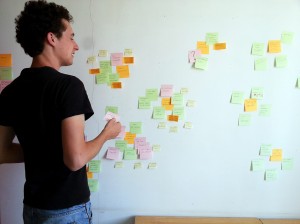
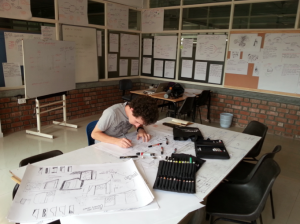
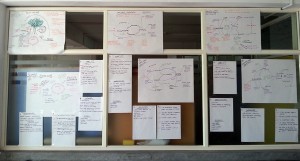
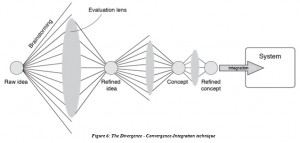
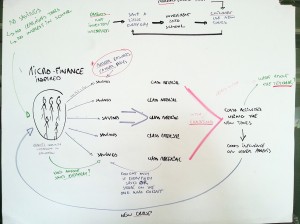
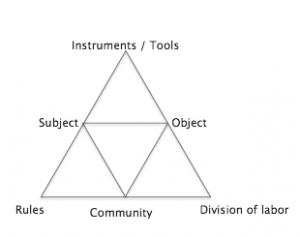
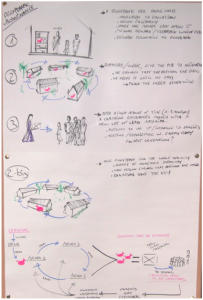
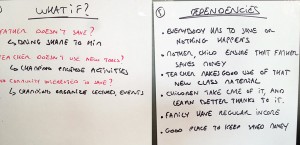
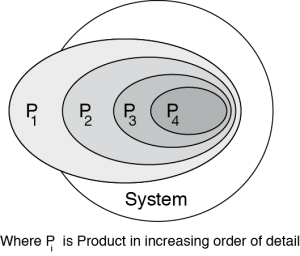
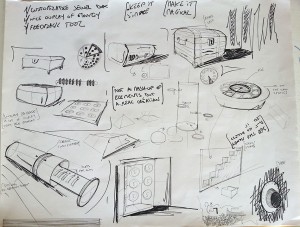
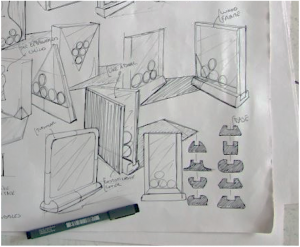
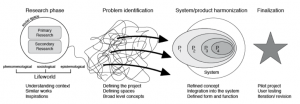


0 comment
Leave a comment